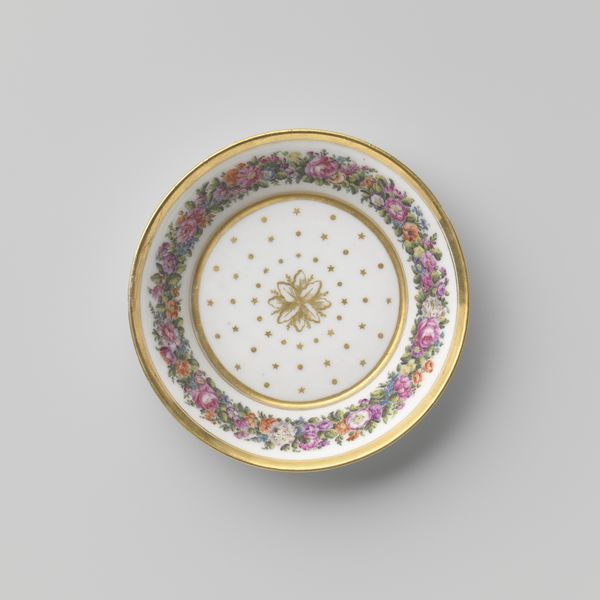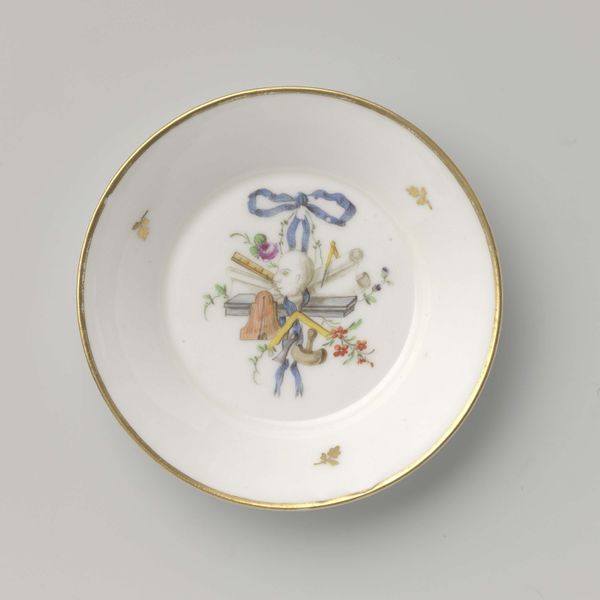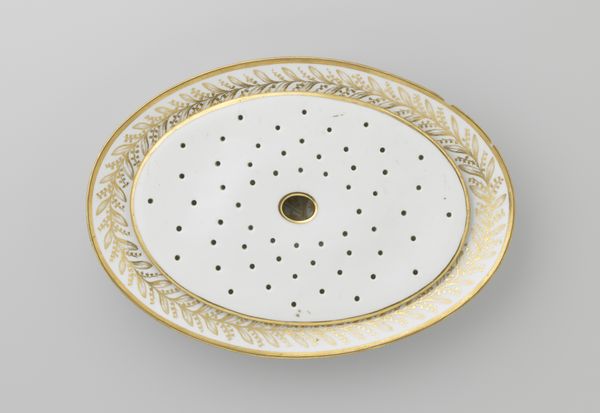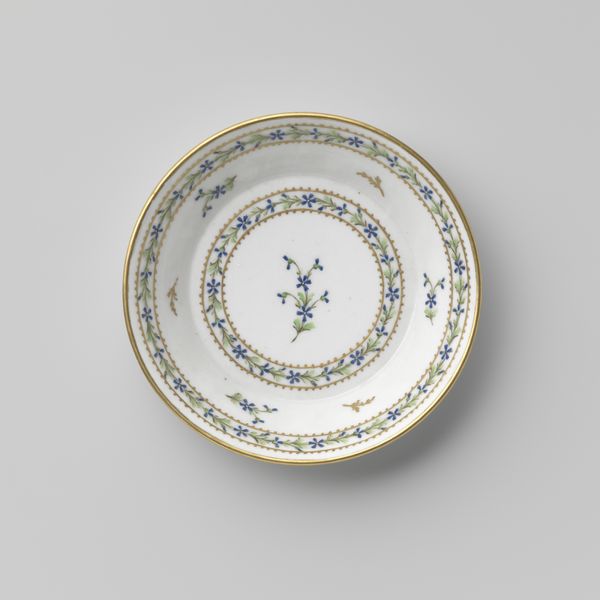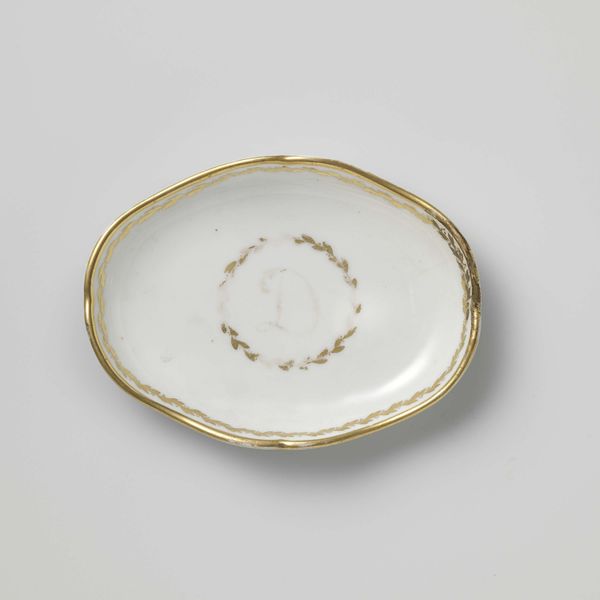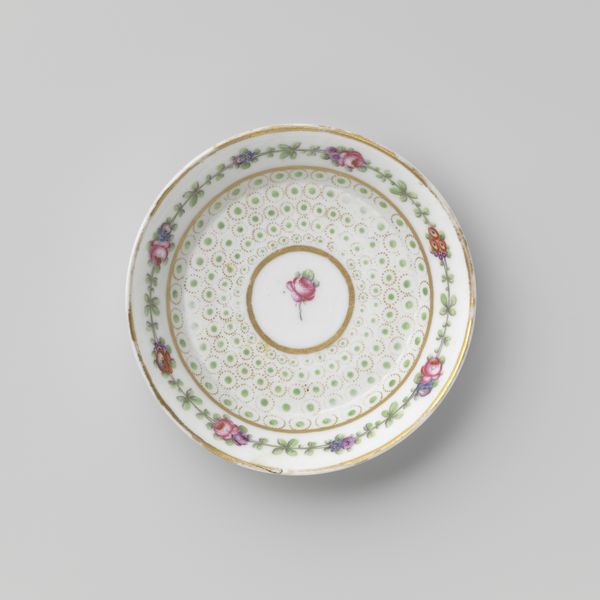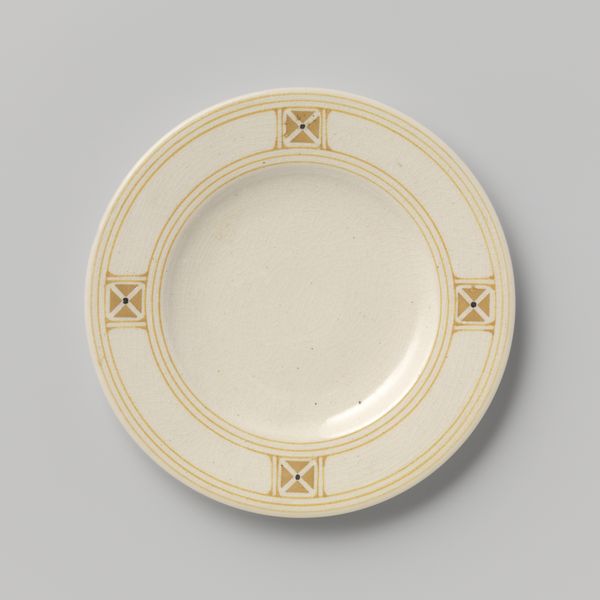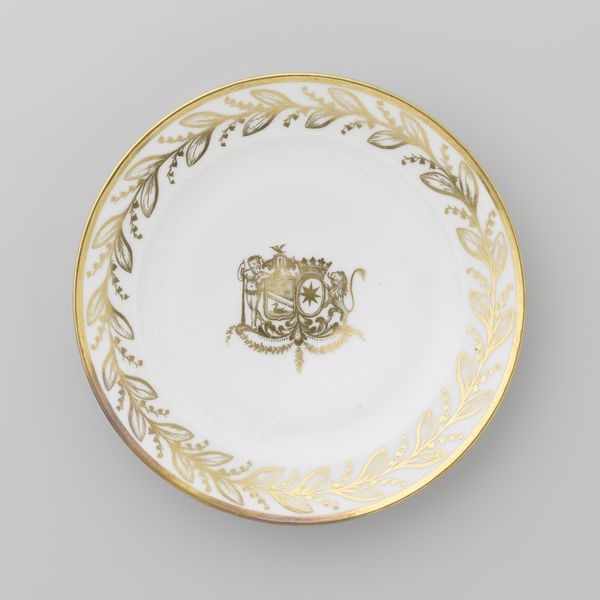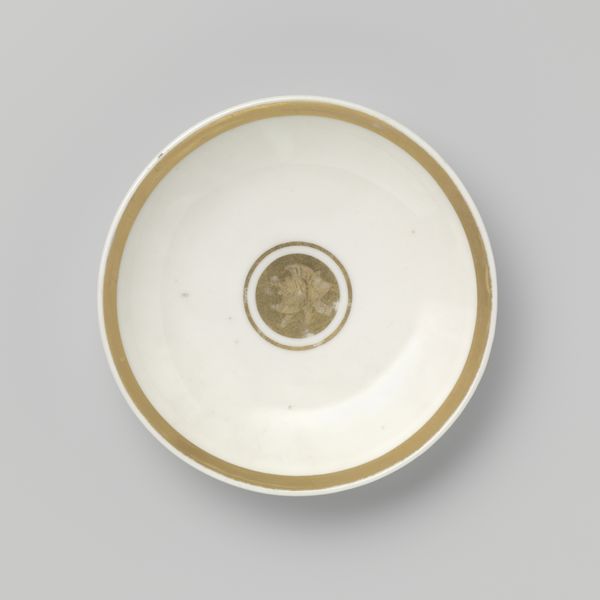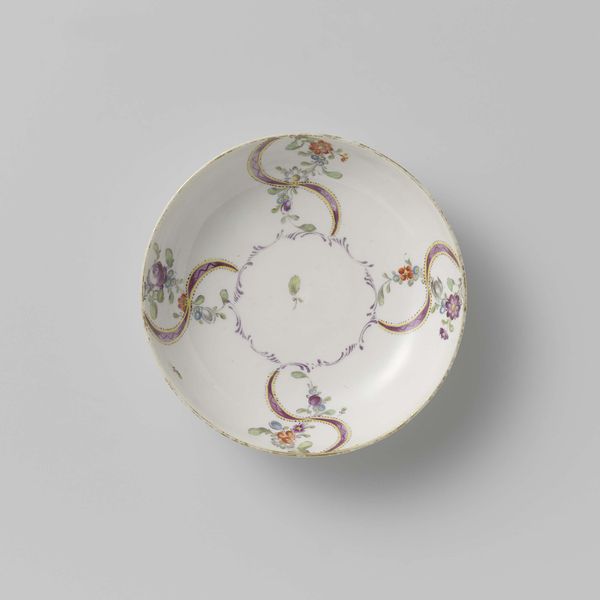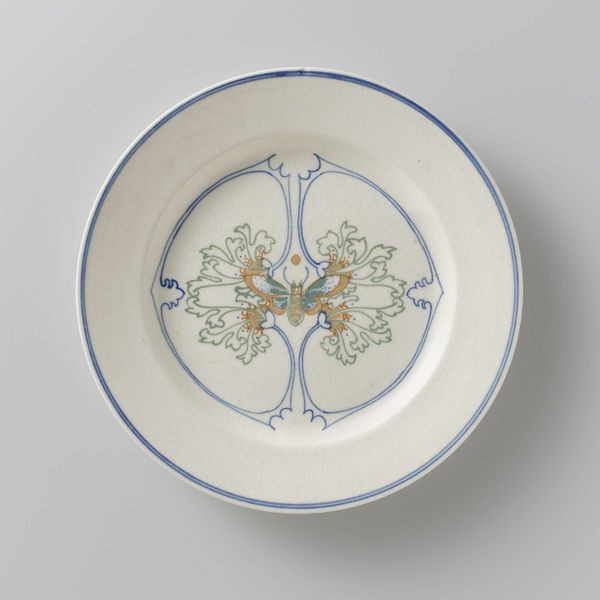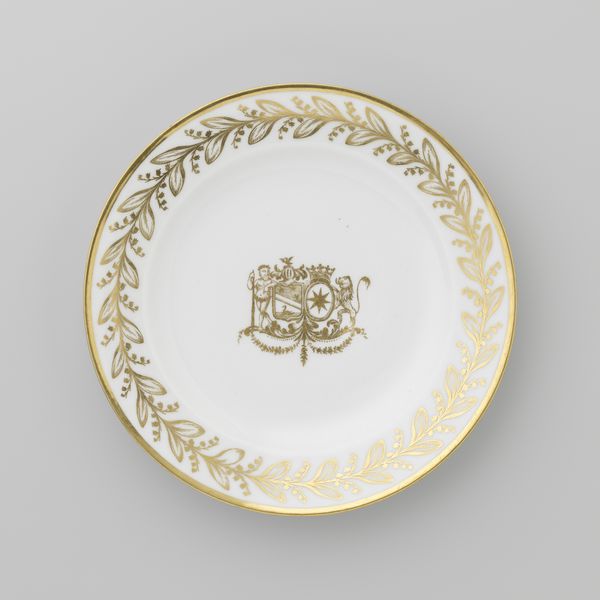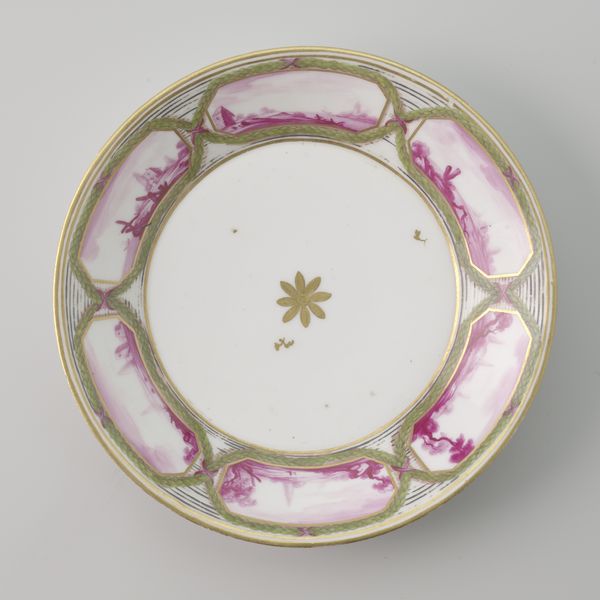
ceramic
#
ceramic
#
decorative-art
Dimensions: height 3 cm, diameter 12.6 cm, diameter 7.7 cm
Copyright: Rijks Museum: Open Domain
Editor: Here we have a delicate ceramic saucer, titled "Saucer with a medallion among dots," created around 1808 by an anonymous artist. The simple design—gold dots and a central medallion—gives it a precious feel, yet it's clearly functional. How would you interpret this piece? Curator: It’s tempting to dismiss this as mere decoration, but I see a focus on the process and material that tells a more complex story. The gold accents, meticulously applied, speak to the labor involved in creating luxury goods. Consider the social context: who would have owned this, and what kind of labor went into producing it? Were the ceramics locally produced, or imported? Editor: I see your point. It's easy to overlook the human effort behind such a seemingly simple object. Are you suggesting its value comes as much from its creation as its design? Curator: Precisely. By 1808, porcelain production, once a closely guarded secret, was becoming more widespread, though still far from mass-produced. Where were similar pieces being made at this time and who was emulating them? Examining this can help understand its economic significance. The ‘decorative’ aspect, in this view, isn’t superficial; it reflects a careful investment of skilled labor and scarce material. Editor: So, even a functional object like this reflects broader economic and social relationships? Curator: Exactly. Analyzing its materiality allows us to look beyond mere aesthetics. This saucer provides insight into consumption, craft practices, and trade networks of its time. How does this understanding change your initial perspective? Editor: I’d now consider it less a quaint decorative object and more an emblem of 19th-century production and trade. It seems the beauty is less in the eye and more in the context! Curator: Glad to hear you see value in this object now!
Comments
No comments
Be the first to comment and join the conversation on the ultimate creative platform.
